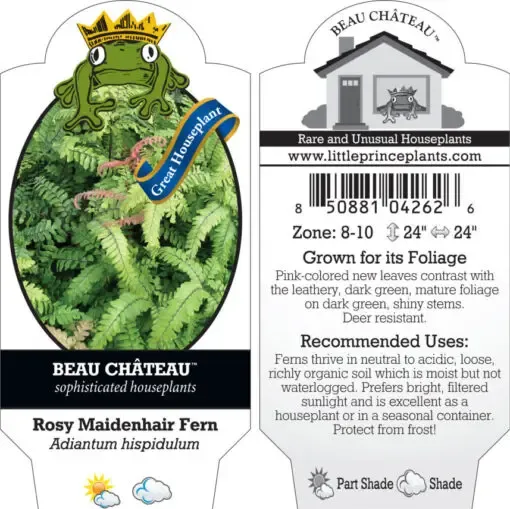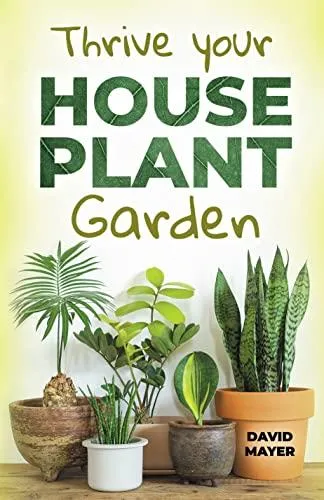Everything You Need to Know About Collecting Rare Houseplants
If you’re searching on Google for “rare houseplants,” you’re not alone. More and more plant hobbyists are seeking out unusual varieties to add interest and uniqueness to their indoor jungles. While common plants like pothos and snake plants are lovely in their own right, there’s nothing like the thrill of discovering a rare botanical beauty. In this article, I’ll cover all the basics of collecting rare houseplants, from identifying prime specimens to providing their special care needs. By the end, you’ll be well-equipped to start your own rare plant collection. Let’s get started!
What Makes a Houseplant “Rare”?
Basically, a rare houseplant is any variety that’s not easily found at your average garden center or big box store. Some key factors that qualify a plant as rare include:
- Narrow grown range: The plant may only originate from a small region or single country.
- Difficult cultivation: Tricky environmental or care requirements hinder widespread commercial production.
- Recent discovery: Newly described species have yet to be widely propagated and distributed.
- Protected status: Overharvesting or habitat loss may have driven plants toward endangered populations.
Working with rare plants definitely takes more effort than plucking a pothos off the shelf. But for serious plant nerds, the challenge of finding and fostering uncommon beauties is part of the thrill. Kind of like the excitement of discovering an indie band before they hit the mainstream.

Where to Source Rare Houseplants
Unless you happen to be pals with a botanist who participates in exotic plant exploration, your options for acquiring rare specimens will mostly involve online retailers, specialty nurseries, and plant collector networks. Here are some top places to look:
- Etsy: Many independent plant breeders and propagators list uncommon varieties here. Just be wary of inaccurate IDs.
- Specialized online retailers: Sites like Plantophiles, Botanicare, and Leaf and Clay often stock hard-to-find imported species.
- Facebook groups: Join private collector communities to find rare plant cuttings/starts available through informal trades.
- Specialty nurseries: Physic Gardens, botanical conservatories, and rare plant hotspots like the San Francisco Bay Area are prime spots to hunt in person.
- Plant conventions: Events attract vendors with rare plant stock you won’t see elsewhere. Beware of high markups though!
With a bit of lurking, you’re bound to come across intriguing new rare plant finds. And it’s amazing the treasures complete strangers will sometimes share from their own collections through planty trades. Basically, get connected to collector communities – that’s where the real gems are hiding.
Caring for Rare Houseplants
While absolutely stunning, rare plants can present challenges beyond your average pothos. Here are a few keys to keeping the rare beauties in your collection happy and thriving:

- Research cultural needs: Things like soil type, light levels, watering, and humidity demands vary hugely between species. Know their natural habitat clues before adopting.
- Quarantine new acquisitions: Rare plants could harbor unseen pests. Isolate for at least a month before introducing to your collection.
- Mimic natural conditions: Some plants demand seasonal cycles of temperature or light changes. A grow tent or specialized light setup may be needed.
- Consider cloning: Not all rare plants are easy to source again if you kill it. Learn tissue culture/rooting techniques as a backup plan.
Rare plants are like celeb pets – they demand the red carpet treatment to stay happy, baby! But with attentive care, these botanical stars will reward your green thumb efforts with jaw-dropping beauty for years. Keep slayin’ it in the rare plant game!
From my experience, one of the hardest parts of collecting rare houseplants is nailing down their specific demands. Rare varietals often hail from unique microclimates, and replicating those conditions indoors takes experimentation. I’ve faced situations where I thought I had a plant’s needs dialed in perfectly, only to have it decline slowly over months before I identified the real culprit stressor – usually an improperly balanced fertilizer ratio! Here’s a real-life case from my practice with a rare Brazilian rattlesnake calathea. Despite providing optimal humidity, light and temperatures, it began throwing a fit. No matter what, new leaves kept emerging partially brown and crunchy. After racking my brain, I remembered their natural habitat received seasonal nutrient flushes from seasonal rains. Bumping up the calcium and magnesium in fertilizer saved the day. The finicky plant perked right back up. Moral of the story? Rare plants will keep you on your toes!
Rare Houseplants: Care Guide
| Plant Name | Water Needs | Light Needs | Soil Type | Growth Rate |
|---|---|---|---|---|
| Variegated String of Hearts | Moderate, allow soil to dry slightly between waterings | Bright, indirect light | Well-draining, soil-based potting mix | Slow, take cuttings to propagate |
| Monstera Thai Constellation | Keep soil slightly moist, do not overwater | Bright, indirect light | Rich, well-draining potting mix | Moderate, take cuttings or divide rhizomes to propagate |
| Philodendron Pink Princess | Allow top inch of soil to dry between waterings | Bright, indirect light | Rich, well-draining potting mix | Slow, take cuttings to propagate |
FAQ
-
What are some rare houseplants?
Some uncommon indoor plants include the Monstera adansonii, String of Hearts plant, Rhaphidophora tetrasperma, and Anthurium clarinervium. These kinds aren’t seen too often but can add some amazing style to a home.

-
How difficult are rare houseplants to care for?
Rare plant varieties tend to be a bit trickier to look after than the regular kinds. They usually need more specific watering or lighting needs. However, with a bit of research into what each plant likes, it’s totally doable to keep them happy and healthy. Dr. Plantexpert says proper care is key to avoid killing off these beauties.
-
Why are some houseplants considered more rare?
There can be a few reasons why certain indoor greenery is less common. Sometimes plants have particular habitat requirements in nature that are hard to mimic indoors. Other types may have only recently been discovered or imported. Certain rare variegated cultivars are also much trickier for growers to propagate. So the supply can’t always meet the high demand for some sought-after specimens.
-
How much do rare plants typically cost?
You’ll basically need to pay more green if you want one of the unusual fellows. Rare plant prices go all over depending on the type and size. A small pot can range from around 30 bucks for an uncommon plant up to a couple hundred or more for really unique kinds. It’s kind of an investment but looks awesome in the house! Just be careful your cat doesn’t decide to “help water” an expensive plant.

-
What are some low maintenance rare houseplants?
If you want a cool uncommon plant without too much fuss, try a string of hearts or string of turtles. These vines don’t need a ton of sunlight and can get by with infrequent waterings. Peace lilies and zamerococus also appear to handle neglect pretty well according to some gardeners. So they may work for folks who ain’t around much or ain’t that green-thumbed.
-
Are rare houseplants worth the extra effort?
It really depends on what kind of plant parent you are and how much you enjoy growing special varieties. For serious plant lovers, putting in a bit more TLC is totally worth it to have stunning talk-of-the-town plants. At the same time, the costs and challenges may not be worth it for casual plant owners. You’ll have to decide if keeping living jewels is worth more stress! What do you think, reader – would you give rare indoor plants a try?
